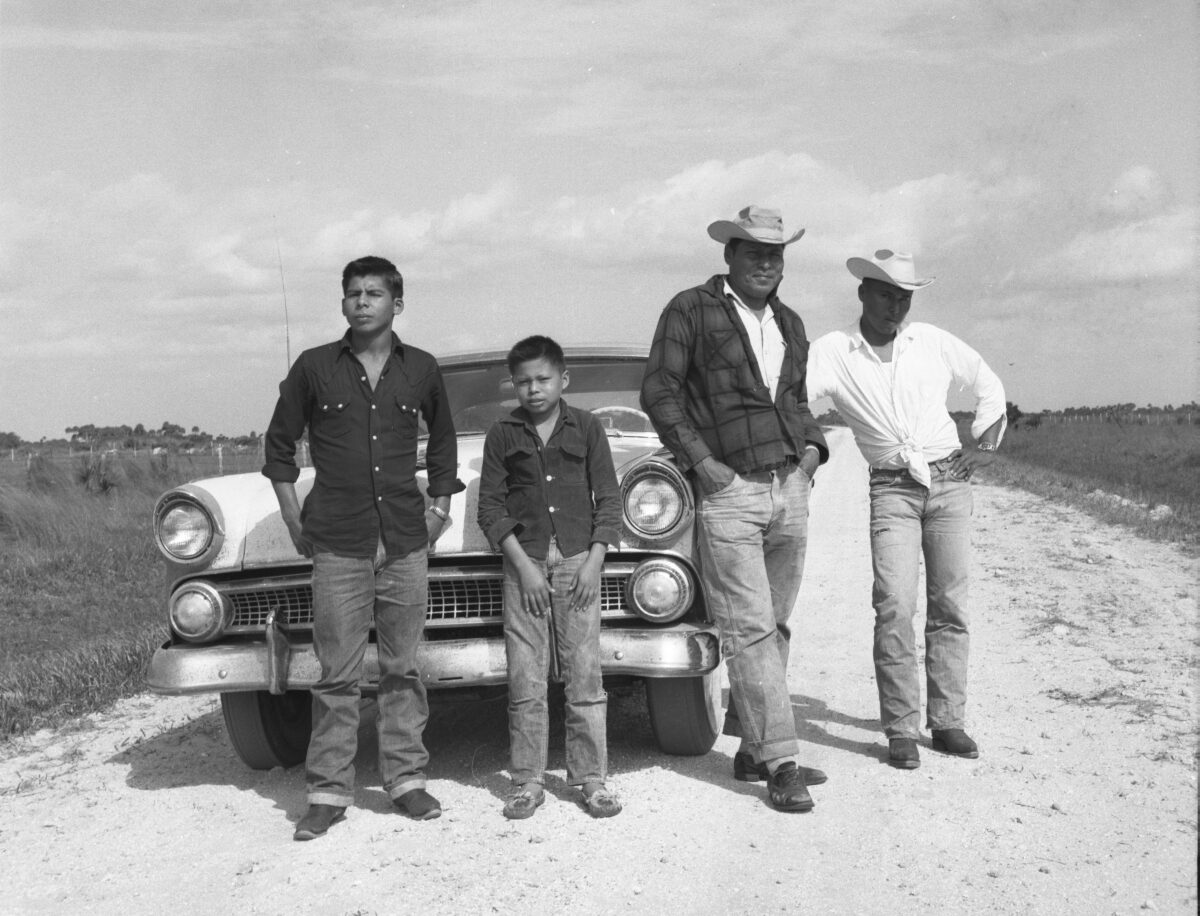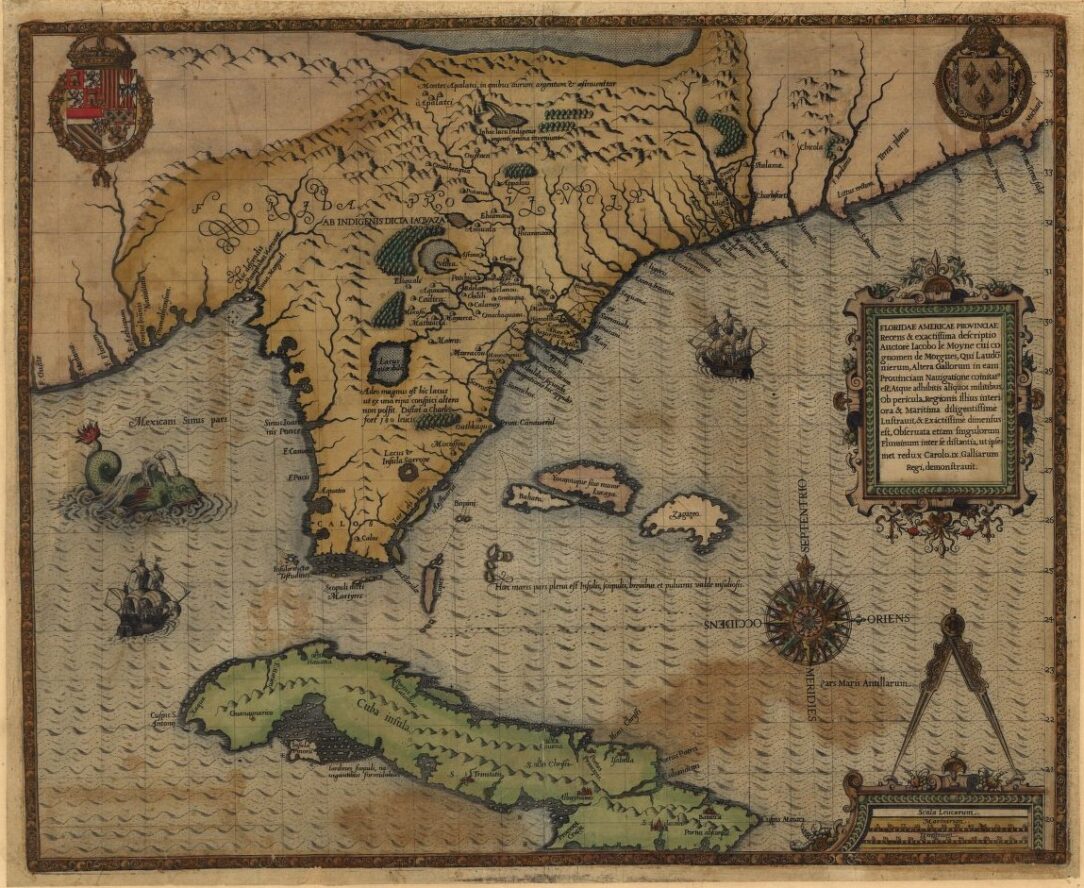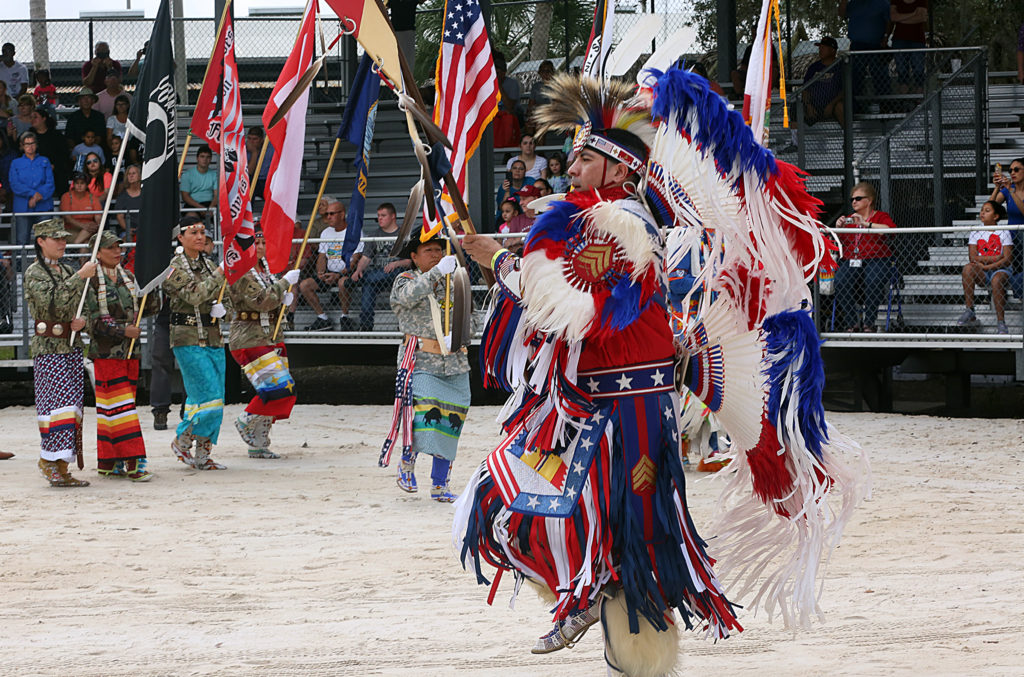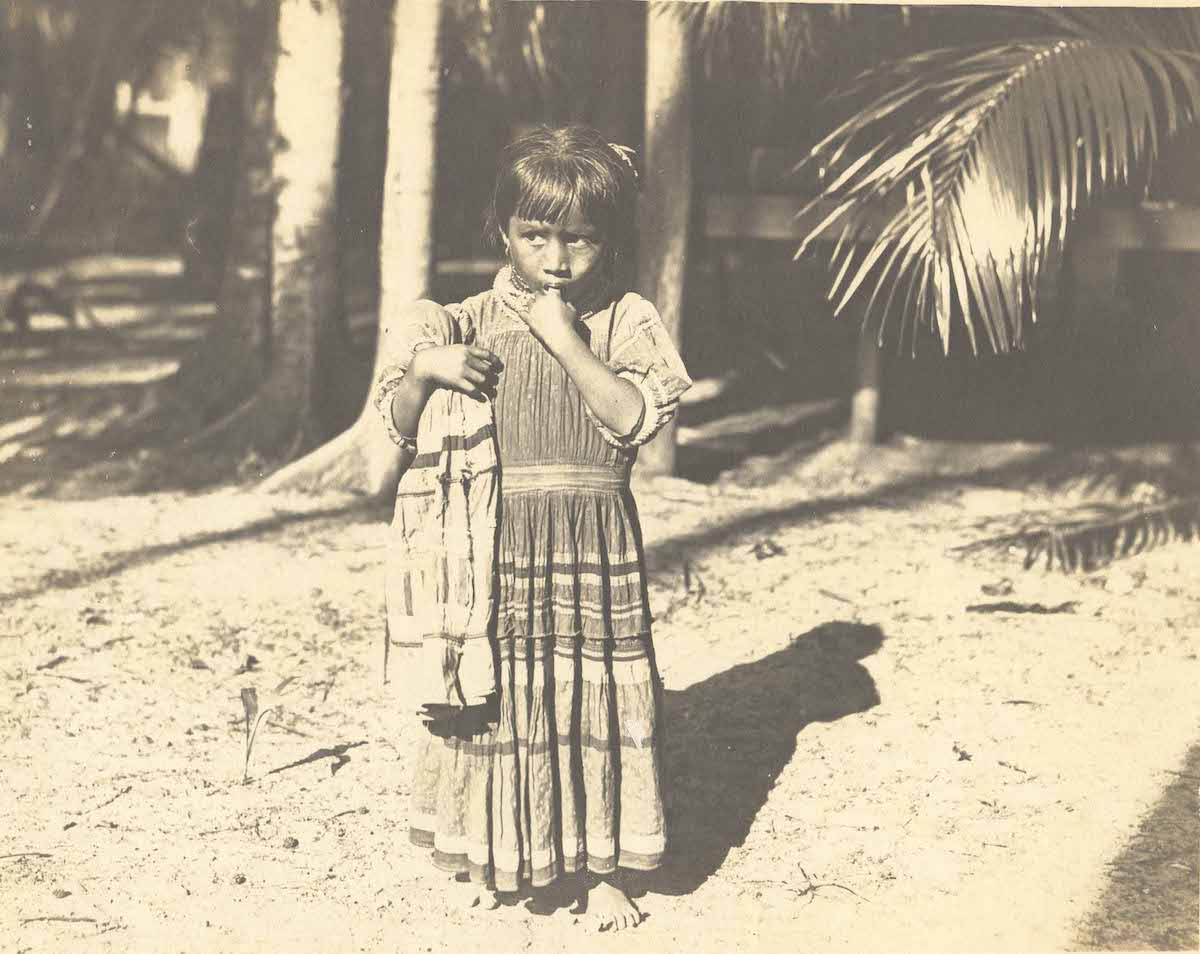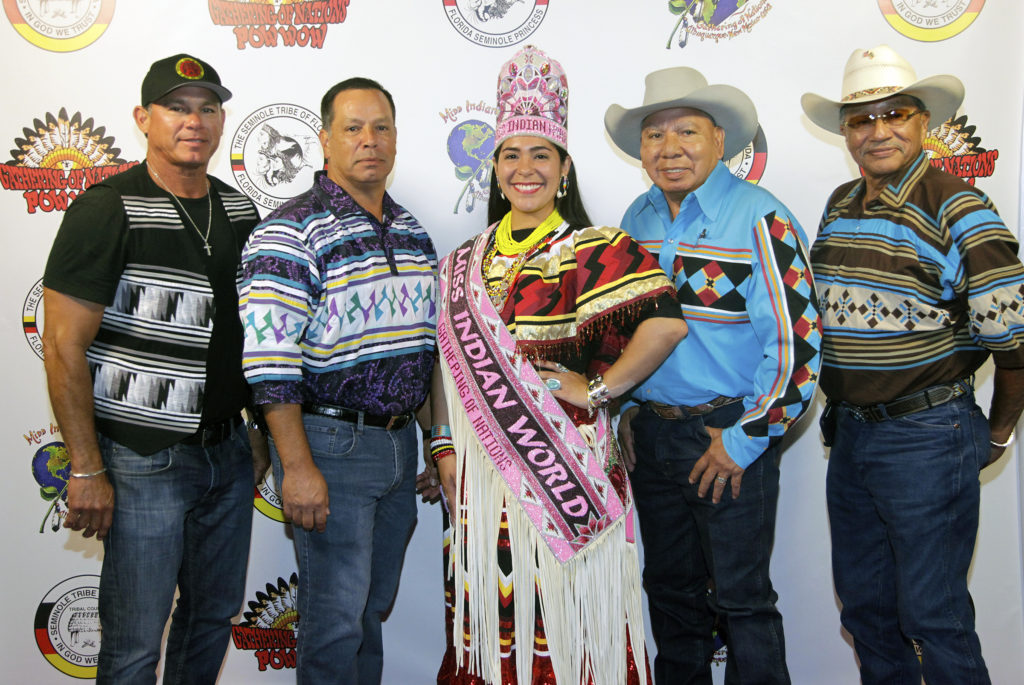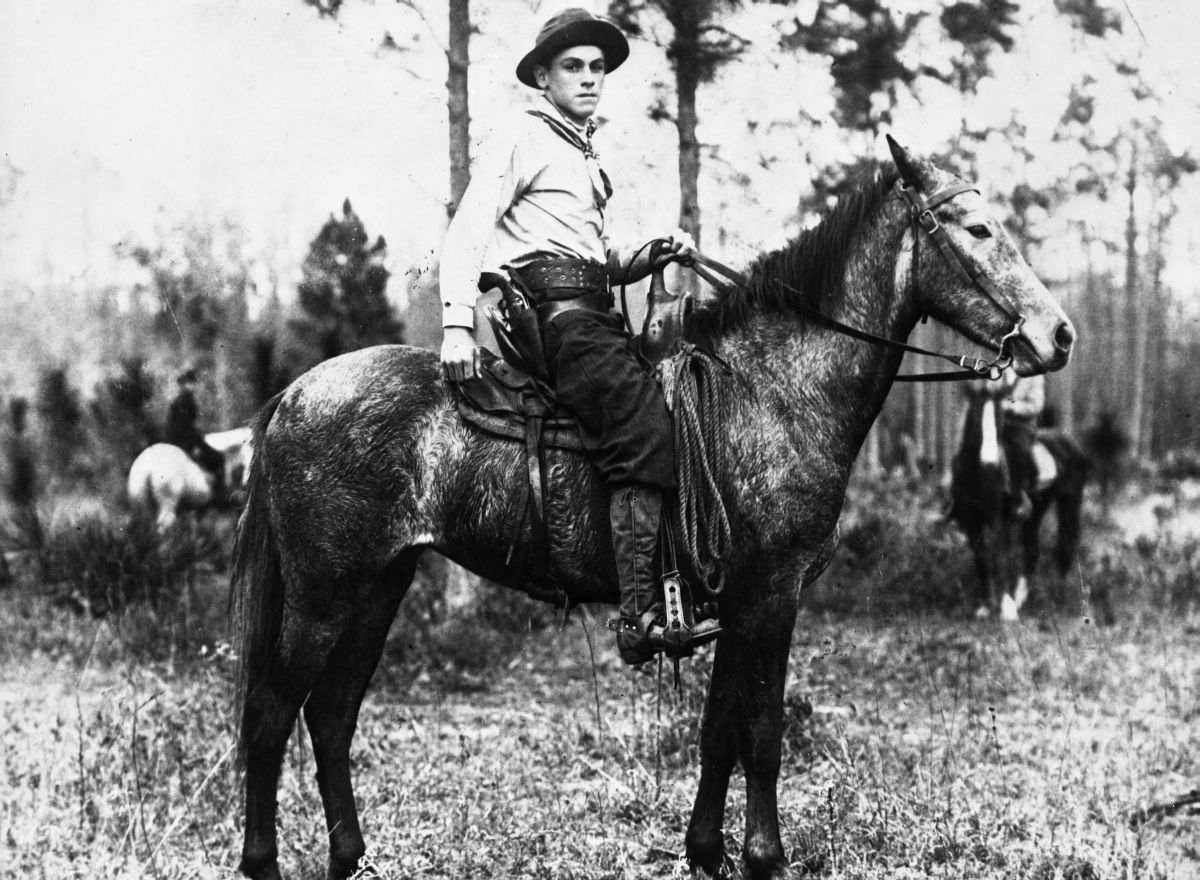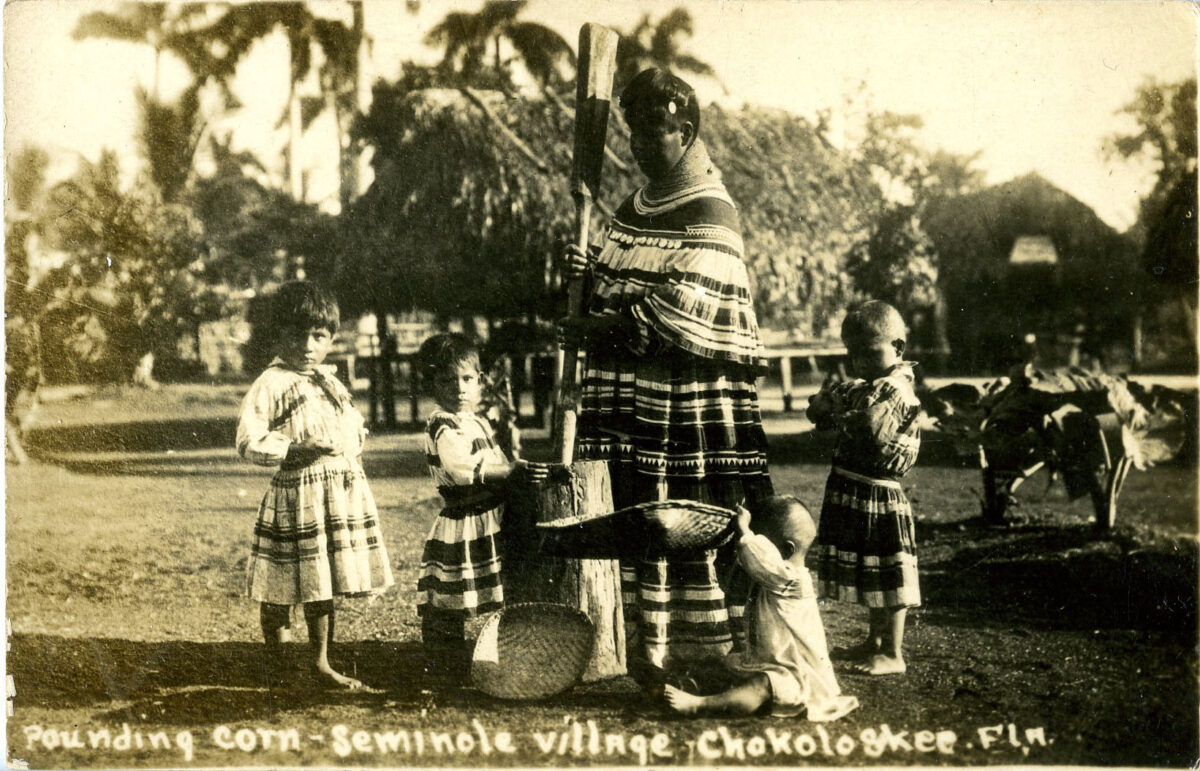Seminole Snapshots: The Peithmann Collection
This week, join us to look deeper at the impact of the Peithmann Collection, a collection of over a thousand photographs taken from the 1950s through the 1970s by Irvin M. Peithmann.
Seminole Music, Language, and Legacy
Even before the modern rock empire of the Seminole Hard Rock, music has been closely tied to Seminole culture, identity, and history. Seminoles use music for social, political, and educational purposes. Significantly, they pass down stories, legends, and even language through song. This week, we are exploring the legacy of Seminole music, and how it has shifted and changed over time. Additionally, at the end of the post, we will look at a handful of modern Seminole artists, and current Seminole representation in music. Above, you can see Dr. Judy Ann Osceola, Pauline (nee Jumper, married name unknown), Judy Baker, Mary Louise Johns (nee Jumper), Priscilla Sayen, and Judy Bill Osceola (with guitar). Occasionally, the women were asked to sing at events as a show of support for the newly formed government of the Seminole Tribe of Florida in the late 1950s. Seminole Music In our featured image this week, you can see
Seminole Spaces: Florida and Seminole Ancestors
Welcome back to our Seminole Spaces Series! This Friday, join us to learn about the Florida’s First People, and how ALL of Florida is Seminole.
What We Have Endured by John and Mary Lou Missal and Willie Johns
Welcome back to our Summer Book Series! This week, we are looking What We Have Endured: A Novel of the Seminole Wars by John & Mary Lou Missal and the late Willie Johns.
What’s Next? Covid-19, the 2020s and Beyond
Welcome back to the final installment of our Decades of Seminole Tourism series! Over the last year we have traced the triumphs and struggles of Seminole tourism throughout the decades, from the first forays into tourist camps to the monumental success of the casino industry. Last month, we looked at the changes to Seminole tourism in the 2010s. In particular, we celebrated and explored the impact of the Seminole Princesses. For the first time ever, a Seminole Tribe of Florida Tribal Member, was crowned Miss Indian World in 2019. This week, we will be looking at the extreme challenges that have faced Seminole tourism so far in the 2020s with the Covid-19 pandemic. Additionally, we will take a hopeful look at what’s next. In our featured image this week, you can see the first Grand Entry of the Brighton Field Day Festival & Rodeo on February 14, 2020 (photo by Beverly
Before Barbie: Spotlight on Seminole Dolls
Before Barbie…there were Seminole dolls! Dolls are having their cultural moment right now. But, did you know they have been an important and celebrated part of Seminole culture much longer than Barbie has even been around? This week, we will be exploring the beauty, simplicity, and impact of Seminole dolls. Seminoles have been making them for their children for generations. But, as Seminole tourism began to take off in the early 1900s, Seminole dolls and other crafts became important tourist commodities. We will also be shining a spotlight on the University of Florida Seminole doll collection and other South Florida collections. Much of these are online for your perusal! In our featured image this week you can see a young Seminole girl with a very early cloth head doll, circa 1900 (2001.32.1, ATTK Museum). Before the recognizable palmetto dolls you can still find today, Seminoles would make simple cloth or wooden
Seminole Princesses and Progress in the 2010s
We focus on a major triumph of the 2010s; the crowning of the first Seminole Miss Indian World, and how Seminole Princesses work to create a better future for the Seminole Tribe.
A Land Remembered by Patrick D. Smith
Welcome to our Summer Book Series 2023! This week, join us to explore the sweeping historical fiction novel A Land Remembered by Patrick D. Smith. The novel heavily features Seminole history and representation throughout the book, and showcases the determination and resilience required to live in a changing Florida.
Seminole Spaces: The Ten Thousand Islands
Discover the mysterious Ten Thousand Islands in Southwest Florida! Home to Florida's first people, these islands and mangroves hold rich wildlife wonders.
The Everglades by Land and Water
Grab your paddle and lace up your boots! This week, join us for a guide on how to explore the Everglades by land and water.


